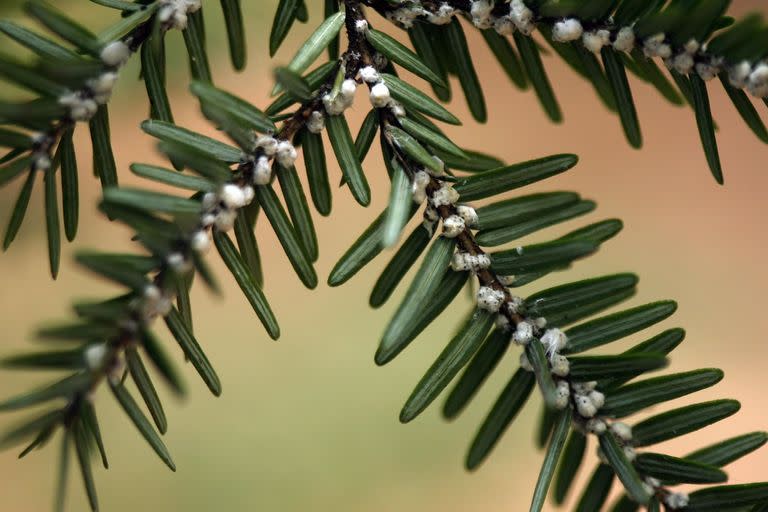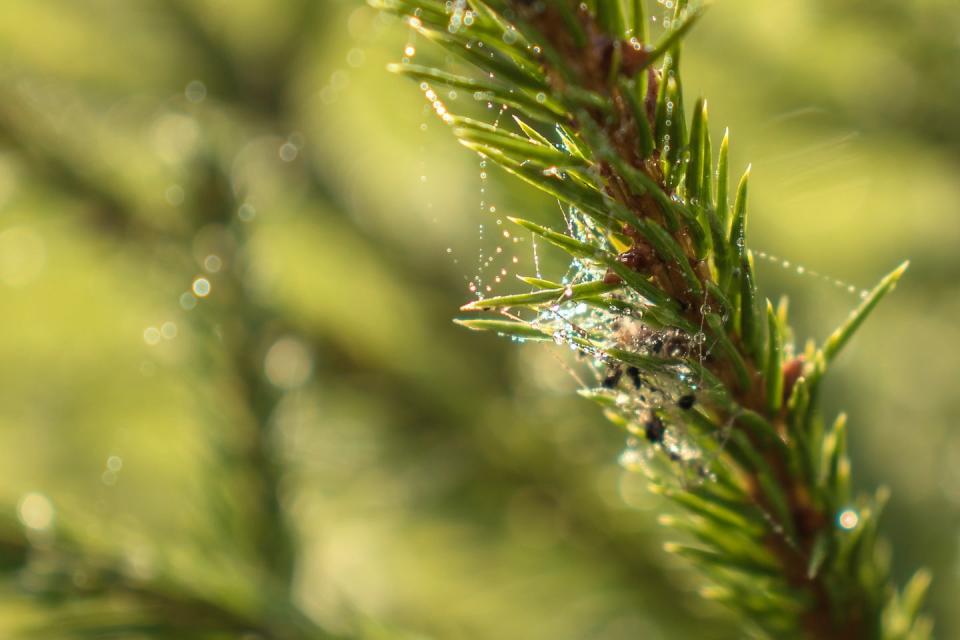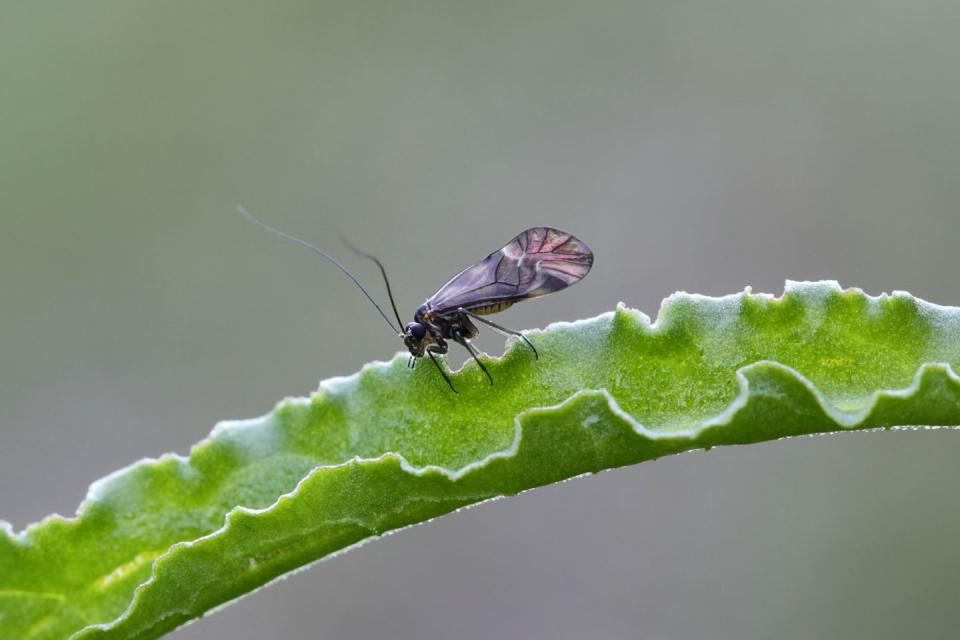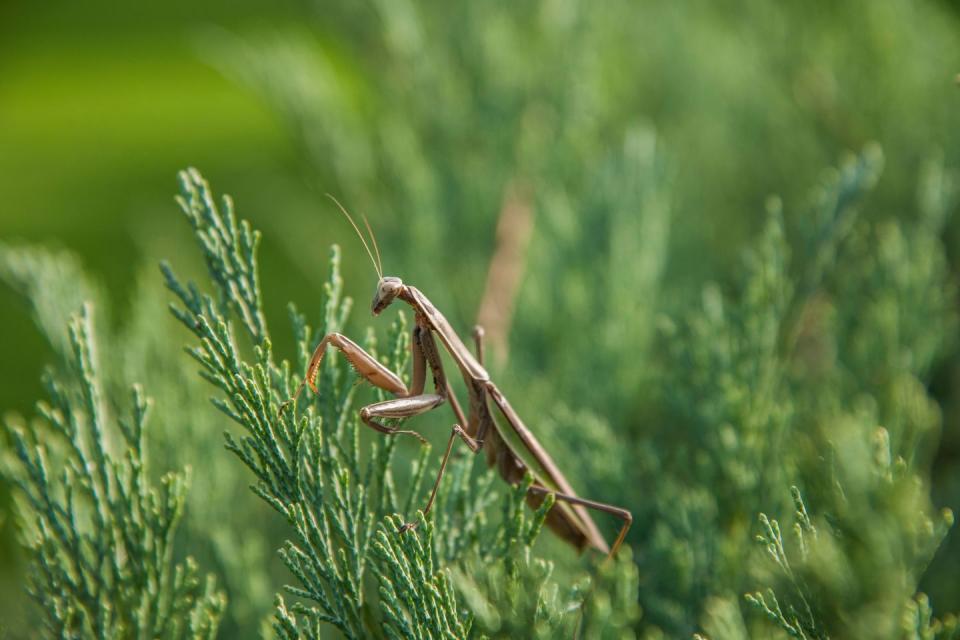Your Christmas Tree Could Be Home to Tons of Bugs—Here‘s How to Get Rid of Them

There’s nothing like the Christmas tradition of picking out a freshly-cut tree to celebrate the holiday season. After all, a Christmas tree is the most festive way to decorate your home—where else would you put the mountain of gifts? (See: unique gifts for family.) But with the greenery can come a host of gross little Christmas tree bugs just waiting to enjoy the comforts of your cozy home.
While you and your family likely can’t wait for the scent of pine needles to fill your abode, these pests living on the branches are a sure way to put a damper on all of your Christmas activities—posing a threat to the holiday cheer we all look forward to.
If you don’t want to opt for an artificial Christmas tree, you’ll want to do everything you can to make sure you get a tree that’s as bug-free as possible, so you can keep them from hanging out in your house beyond December. But what kind of bugs are you looking for, exactly? And how can you get rid of these pests? Ahead, you’ll find everything you need to know about Christmas tree bugs, where they like to hang out, and how to get rid of them safely and effectively.
What are the most common Christmas tree bugs?
There are a few different types of bugs that could be living in your Christmas tree, says Chad Gore, Ph.D., an entomologist and Market Technical Director with Ehrlich Pest Control. Here are the common ones to keep on your radar:

Aphids
These little critters love to suck sap from your tree. They look similar to ticks, but they have six legs and are typically a few millimeters in length. Aphids are often black or brown (but can also be red or green) and some may also develop wings.

Adelgids
Adelgids are tiny, and the coating of wool-like wax they produce can look like a little dusting of snow on your tree (typically around the buds, candles, or needle bases of Christmas trees). The insects underneath can be yellow or purple in color.

Pine needle scale
If it looks like there are specs of white paint on the needles of your tree, you may be dealing with pine needle scale—and what you’re seeing are the eggs (eek!). The infested needles will often drop early. If the scales hatch, small red bugs will produce.

Spiders
“Spiders are predatory feeders, so they are looking to feast on the insects that are living on the tree,” Gore says. Also worth noting: If you see a bird’s nest in a tree you’re interested in, choose another one. They can contain mites and other parasites.

Bark beetles
These bugs are about the size of a grain of rice and have red, brown, or black coloring. They like to feed on stressed trees, so it’s possible they colonized before the tree was harvested. Bark beetles prefer moist wood, so they pose no threat to the structures in your home, like furniture.

Psocids
The little winged insects, also known as bark lice or booklice, like to eat mold or fungi that might be on your tree. They are typically brown or gray in color and die quickly in homes due to low humidity. Despite their name, they are not like typical lice and do not bite or feed on humans.

Praying mantis
In some areas of the country, you might also see praying mantises in your tree, Gore says. You may even find their egg cases attached to the branches, which are large and brown in color. In this case, take that part of the branch outdoors to keep it from hatching inside.
How to get rid of Christmas tree bugs safely
Find any of the above critters in your Christmas tree? You might be a little grossed out, but luckily there are a few tried and true ways to safely get rid of any bugs living on the branches.
Surprisingly, your best bet is to use a vacuum. “Simply vacuum the pest up and then empty the canister or remove the vacuum cleaner bag,” Gore says. “Place the contents into a larger trash bag, seal the trash bag, and take it to an outdoor trash can or dumpster.”
You definitely don’t want to use an over-the-counter insecticide on or around your Christmas tree. “Many can be flammable and the heat of Christmas tree lights could be enough to cause a problem,” Gore warns.
Some sources recommend treating the tree with diatomaceous earth, a powder that kills insects by drying them out. “It would certainly kill insects that contact it and get exposed to enough of it,” Gore says, “but it does not work very quickly.” Plus, the average homeowner may end up over-applying the product, leading to “unnecessary exposure to it by the home occupants,” Gore adds. “If you have pets who like to mess with a tree, you don’t want them to get it on or in them if they ingest it.” If you feel that the infestation is too large to handle on your own, simply remove the tree from your home—your best bet simply may be getting a new or artificial one.
Where would I find Christmas tree bugs?
It depends on the bug. “Scale insects and aphids are sap-feeding insects that can be found on the trunk, limbs, and the woody parts of the tree. This is also where you’ll find bark beetles and psocids,” says Gore.
Adelgids are more likely to be found on the limbs or green parts of the tree, and they can lay eggs that are “white and sac-like, with wispy webbing around them,” Gore says, adding that “you’ll see them very easily against the green of the tree limbs.”
As for spiders, they’ll show up anywhere on your tree. “They could be hiding on the trunk, or within the boughs of the tree,” Gore says.
Should you worry if you find bugs in your Christmas tree?
While it’s gross and less than ideal, these bugs aren’t usually going to harm you. “There’s no reason to panic if you find a pest on your Christmas tree,” Gore says. Most of these bugs prefer to eat plants, so they won’t be much of a bother. While uncommon, some spiders can bite, Gore warns, so it’s not a bad idea to wear gloves when you’re handling your tree and setting it up inside.
In some cases when there’s an egg mass on a tree, bringing the tree inside to a warm space can speed up the development and hatching. “That might create some worry if you suddenly have hundreds of tiny insects that appear around your tree,” Gore says. “However, these cases are rare.”
How to prevent Christmas tree bugs
Gore recommends taking these steps when you go to buy a tree:
Inspect the tree. “It’s never a bad idea to take along a bright flashlight with you as you select your tree,” Gore says. “Shine the light onto the trunk of the tree at several points and look for insects or eggs.” If you see them, try another tree.
Shake your tree. Many places will have a mechanical tree shaker that can be used but, if there’s not one available, Gore recommends giving your tree a “vigorous shake or two” before you put it inside your car or house.
Inspect it again. Just to be safe, before you take the tree into your house.
Again, if you happen to spot a bug or two in your tree, don’t panic. But taking a few of these preventative measures can go a long way toward keeping pests out of your place.
You Might Also Like

